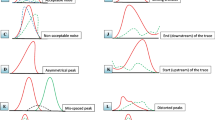Abstract
Owing to the increasing importance of genomic information, obtaining genomic DNA easily from biological specimens has become more and more important. This article proposes an efficient method for obtaining genomic DNA from nail clippings. Nail clippings can be easily obtained, are thermostable and easy to transport, and have low infectivity. The drawback of their use, however, has been the difficulty of extracting genomic material from them. We have overcome this obstacle using the protease solution obtained from Cucumis melo. The keratinolytic activity of the protease solution was 1.78-fold higher than that of proteinase K, which is commonly used to degrade keratin. With the protease solution, three times more DNA was extracted than when proteinase K was used. In order to verify the integrity of the extracted DNA, genotype analysis on 170 subjects was performed by both PCR–RFLP and Real Time PCR. The results of the genotyping showed that the extracted DNA was suitable for genotyping analysis. In conclusion, we have developed an efficient extraction method for using nail clippings as a genome source and a research tool in molecular epidemiology, medical diagnostics, and forensic science.








Similar content being viewed by others
References
Schwartz, A. G., Prysak, G. M., Bock, C. H., & Cote, M. L. (2007). The molecular epidemiology of lung cancer. Carcinogenesis, 28, 507–518.
Mathema, B., Kurepina, N. E., Bifani, P. J., & Kreiswirth, B. N. (2006). Molecular epidemiology of tuberculosis: Current insights. Clinical Microbiology Reviews, 19, 658–685.
Merikangas, K. R., & Risch, N. (2003). Genomic priorities and public health. Science, 302, 599–601.
Khoury, M. J. (2003). Genetics and genomics in practice: The continuum from genetic disease to genetic information in health and disease. Genetics in Medicine, 5, 261–268.
Permutt, M. A., Wasson, J., & Cox, N. (2005). Genetic epidemiology of diabetes. Journal of Clinical Investigation, 115, 1431–1439.
Cline, R. E., Laurent, N. M., & Foran, D. R. (2003). The fingernails of Mary Sullivan: Developing reliable methods for selectively isolating endogenous and exogenous DNA from evidence. Journal of Forensic Sciences, 48, 328–333.
Cervantes, J. (2004). HLA class II allele typing using DNA obtained from human fingernail clipping material. Revista de Investigacion Clinica, 56, 341–344.
Matsuzawa, N., Shimozato, K., Natsume, N., Niikawa, N., & Yoshiura, K. (2006). A novel missense mutation in Van der Woude syndrome: Usefulness of fingernail DNA for genetic analysis. Journal of Dental Research, 85, 1143–1146.
Tahir, M. A., & Watson, N. (1995). Typing of DNA HLA-DQ alpha alleles extracted from human nail material using polymerase chain reaction. Journal of Forensic Sciences, 40, 634–636.
Maurer, H. R. (2001). Bromelain: Biochemistry, pharmacology and medical use. Cellular and Molecular Life Sciences, 58, 1234–1245.
Ganapathy, C. V., & Sastri, B. N. (1939). The nature of papain. Biochemical Journal, 33, 1175–1179.
Bergmann, M., & Fruton, J. S. (1937). The nature of papain activation. Science, 86, 496–497.
Kobayashi, S., Inoue, S., Hosoi, T., Ouchi, Y., Shiraki, M., & Orimo, H. (1996). Association of bone mineral density with polymorphism of the estrogen receptor gene. Journal of Bone and Mineral Research, 11, 306–311.
Fiona, E. A. M., Liamn, M., Alison, G., et al. (2002). Genetic and environmental determinants of peak bone mass in young men and women. Journal of Bone and Mineral Research, 17, 1273–1279.
van Breda, S. G., Hogervorst, J. G., Schouten, L. J., et al. (2007). Toenails: An easily accessible and long-term stable source of DNA for genetic analyses in large-scale epidemiological studies. Clinical Chemistry, 53(6), 1168–1170.
Yamagata, H., Masuzawa, T., Nagaoka, Y., Ohnishi, T., & Iwasaki, T. (1994). Cucumisin, a serine protease from melon fruits, shares structural homology with subtilisin and is generated from a large precursor. Journal of Biological Chemistry, 269, 32725–32731.
Uchikoba, T., Yonezawa, H., & Kaneda, M. (1995). Cleavage specificity of cucumisin, a plant serine protease. Journal of Biochemistry, 117, 1126–1130.
Kaneda, M., Yonezawa, H., & Uchikoba, T. (1995). Improved isolation, stability and substrate specificity of cucumisin, a plant serine endopeptidase. Biotechnology and Applied Biochemistry, 22, 215–222.
Kaneda, M., & Tominaga, N. (1975). Isolation and characterization of a proteinase from the sarcocarp of melon fruit. Journal of Biochemistry, 78, 1287–1296.
Acknowledgement
This study has been supported in part by a Grant-in-Aid for Young Scientists (B) from the Ministry of Education, Culture, Sports, Science and Technology of Japan (No. 19700606).
Author information
Authors and Affiliations
Corresponding author
Rights and permissions
About this article
Cite this article
Yoshida-Yamamoto, S., Nishimura, S., Okuno, T. et al. Efficient DNA Extraction from Nail Clippings Using the Protease Solution from Cucumis melo . Mol Biotechnol 46, 41–48 (2010). https://doi.org/10.1007/s12033-010-9273-6
Published:
Issue Date:
DOI: https://doi.org/10.1007/s12033-010-9273-6




